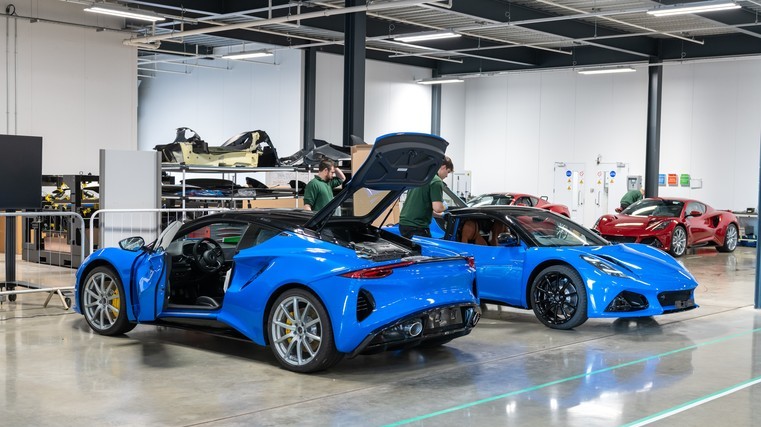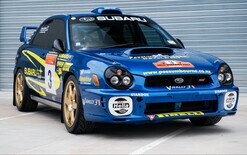Inside Lotus’ $190m factory

Lotus has officially opened its new sports-car manufacturing facility in the UK – and has named it in honour of the company’s founder and inspiration.
The Chapman Production Centre in Hethel, Norfolk, is being dubbed a world-class centre of excellence and it’s already building the Emira, the marque’s last petrol-powered vehicle.
Together with Lotus Advanced Structures (LAS), which is a new sub-assembly facility in nearby Norwich, the centre is part of the company’s NZ$193 million investment in the country.
It’s also an investment in the skills and passion of the Lotus team, which has more than doubled since 2017 when Chinese multi-national Geely became the majority shareholder.
Lotus has recruited staff across all areas of the business, including skilled manufacturing operatives, engineers and technicians. In assembly and production operations along, about 300 extra employees have joined the company.
Matt Windle, managing director of Lotus Cars, says the marque is transforming from a UK sports-vehicle company to a global performance-car business and brand, and the Chapman Production Centre “is a symbol of us delivering on that ambition”.
He adds: “We’re proud of our past successes and excited about our all-electric future, which was started all those years ago by Colin Chapman.”
Clive Chapman, son of co-founders Colin and Hazel Chapman, says: “For our family, it’s extraordinary to witness Lotus on the path to becoming a global manufacturer. I thank Geely and Lotus for honouring Hazel and Colin in such a splendid manner.”

The new Chapman Production Centre is one of the world’s most advanced low-volume automotive manufacturing facilities and can build around 5,000 cars a year.
The all-new paint shop is a state-of-the art facility that uses automation to apply primer, colour and clearcoat. This process ensures an exceptionally high-quality finish, a high throughput of vehicles and “perfect repeatability”.
The system is highly efficient. Dry filtration uses 60 per cent less energy than a wet system, while an electrostatic primer on body panels reduces paint usage by 30-40 per cent compared to the previous hand-sprayed process.
All Lotus sports-car operations in Hethel and Norwich are powered by 100 per cent renewable electricity thanks to a partnership with energy supplier Centrica.
The buildings that housed the previous assembly lines have been converted to sub-assembly. They are now home to the all-new framing line. This builds car bodies as part of the Emira’s pre-production with robots applying bonding agent to the sides, roof and cantrails.
All-new automated guided vehicles (AGVs) ensure the highly efficient movement of cars being constructed on set routes around the factory, allowing operations teams to focus on assembling the vehicles.
By using AGVs, Lotus has future-proofed its manufacturing system because changes can be made quickly and easily to accommodate different processes as new models are introduced.
The main assembly line also includes equipment for wheel alignment and headlamp aim, a vehicle configuration and test system, monsoon water-test booth, a rolling road and fuel-fill area.
Next to the Chapman Production Centre is a new validation track where production cars are tested through quality-assurance process. This facility is a key element of sign-off, one of many such processes that aim to ensure the highest quality.
The all-new sub-assembly facility, Lotus Advanced Structures, in Norwich is just a few kilometres north of Hethel. It houses the bonded and extruded chassis assembly, and subframe and fuel-tank manufacture, for vehicles.
The chassis and front-end assembly line includes robot-bonding agent application, 12 milling machines, and a laser-cutting machine to make fuel tanks, rear sub-frames and many of the steel and aluminium components used on the Emira.






